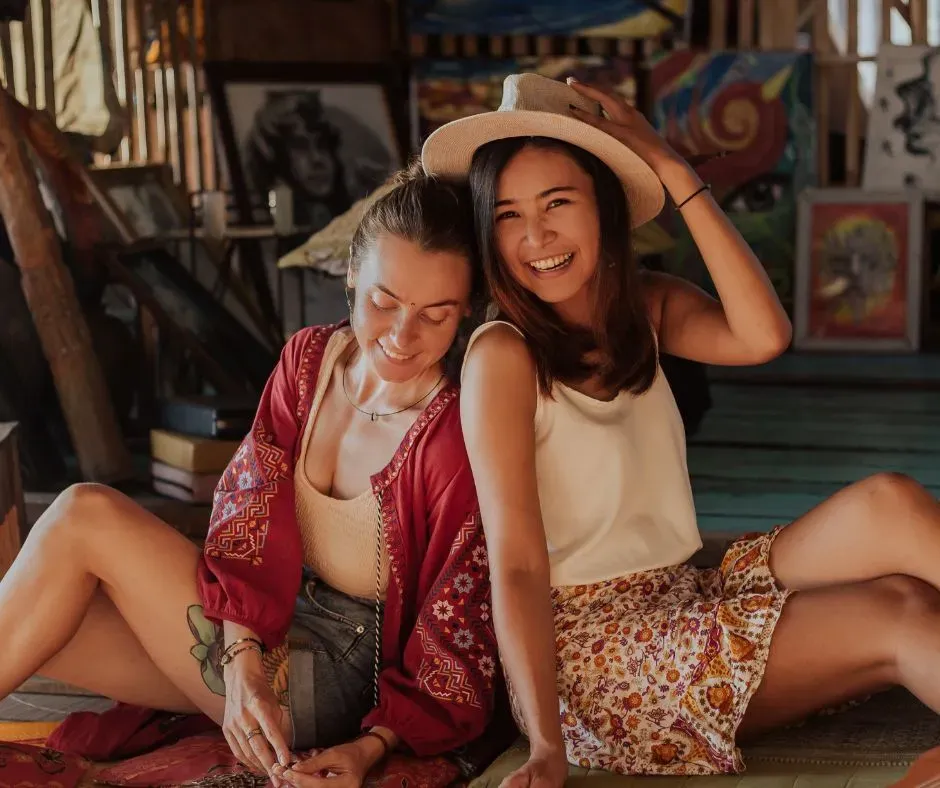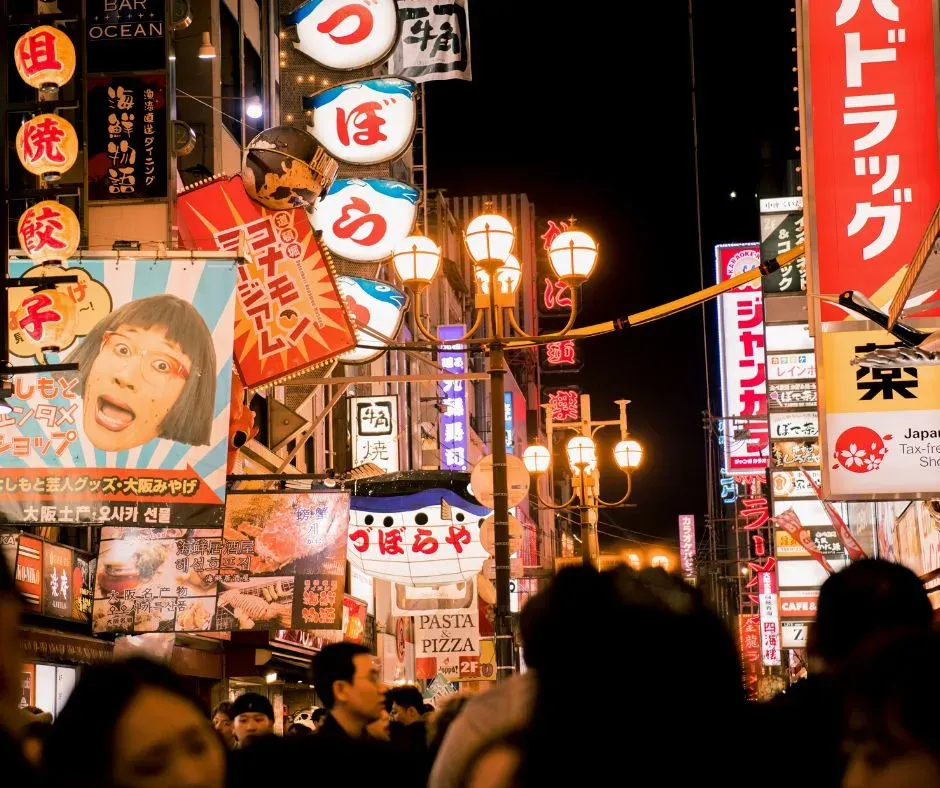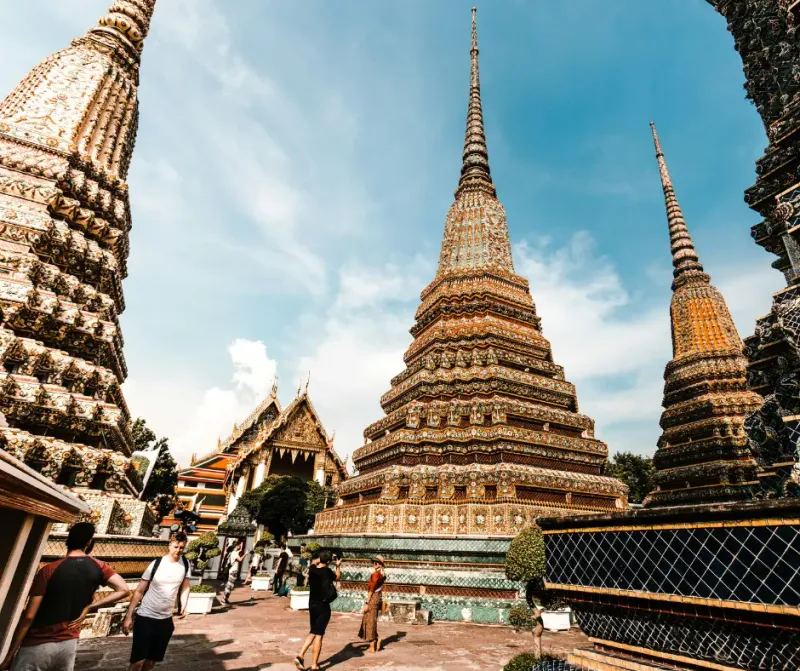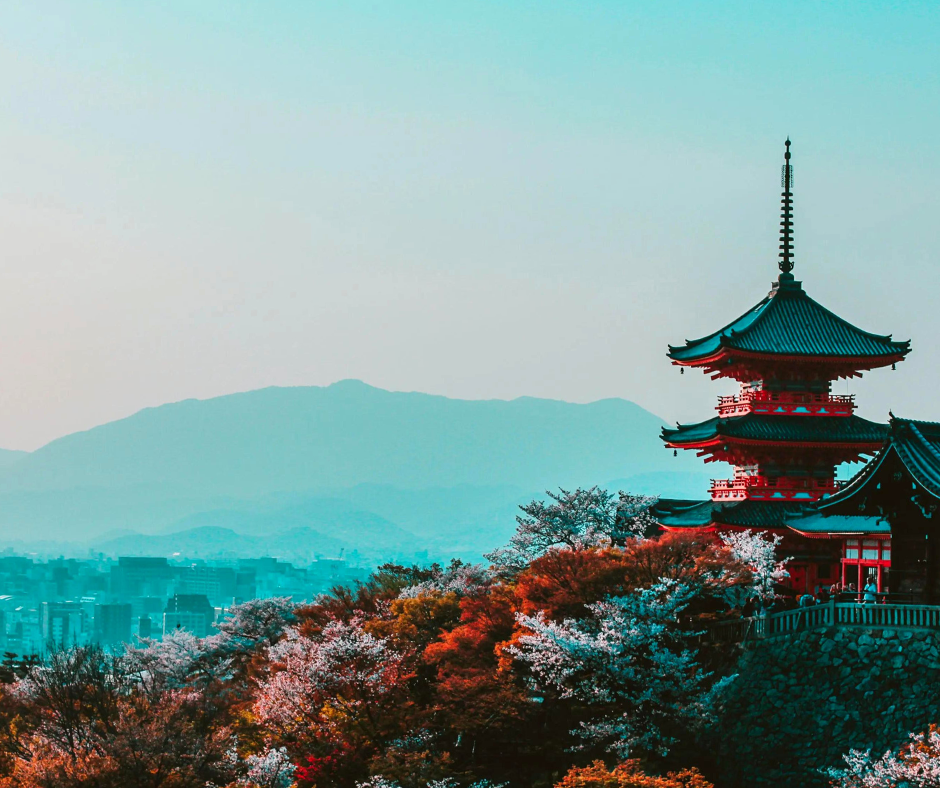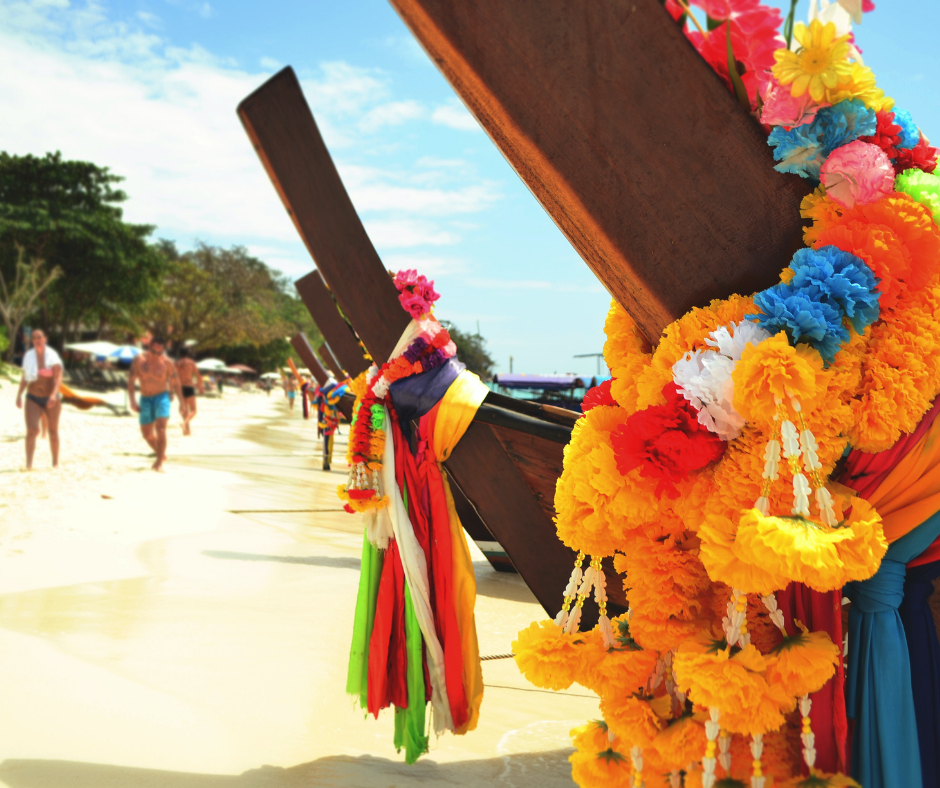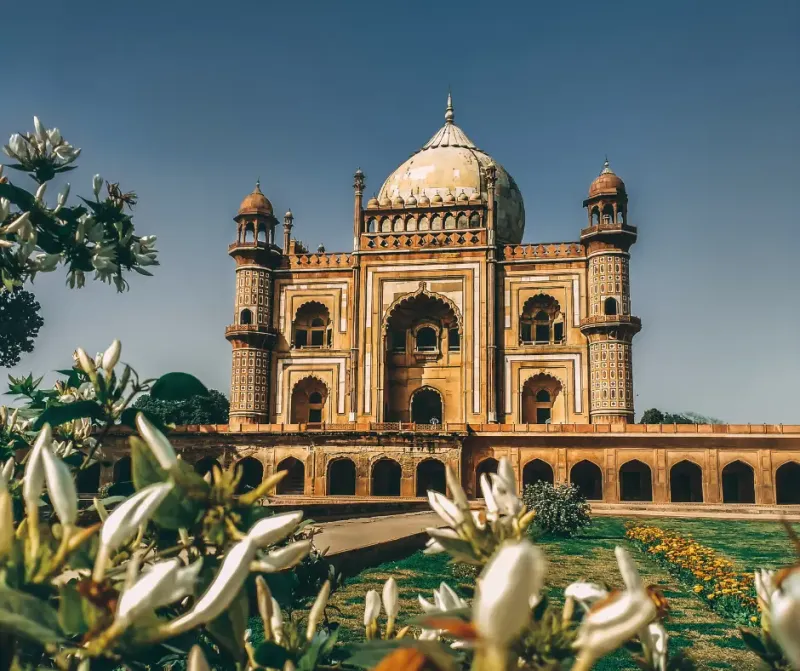Palawan, Bohol, and Boracay are just three of many marvelous places in this exotic island paradise. Breathtaking volcano landscape, dense rainforests, and crystal clear waters on white-powdery beaches are just a few of the reasons why thousands of honeymooners travel to the Philippines every year.
The Pacific island archipelago consists of more than 7,000 islands, which are home to modern innovative hubs like Manila and Cebu, and remote island gems such as Palawan. Equip yourself with a local sim card to ensure stable internet, rent a scooter for island excursions, and reward yourself with a fresh coconut while watching the sunset.
🌱 Travel health insurance for the Philippines
🇵🇭 Entry requirements for the Philippines
- Visa: Many passport holders can stay in the Philippines visa-free for 30 days maximum. Visitors who want to stay longer should follow the requirements.
- Covid-19: Vaccinated travelers must show their proof of vaccination certificate. Travelers who want to enter the Philippines unvaccinated, have to present a laboratory-based rapid antigen test before boarding and might have to take another one upon arrival.
✈️ How to get to the Philippines
- Plane: There are many Philippine Airports scattered across the islands with international and domestic flight connections. Ninoy Aquino International Airport (MNL) is the hub serving Manila.
- Manila Airport is well-connected to Asia, North America, and Oceania. However, the only direct flight connection between Europe and Manila Airport from and to Istanbul.
- Cebu Airport (CEB) connects the Philippines and Europe through direct flights from and to Amsterdam. Other parts of the world are connected via Singapore, Hong Kong, and Dubai. - Airport transfer: It's possible to get an airport transfer by taxi or Grab for around 5 Euro.
🚌 Public transport
Public transportation in Manila includes taxis, Uber, buses, Light Rail Transit (LRT), and Metro Rail Transit (MRT).
- LRT/MRT: The transit system consists of 3 lines and you can purchase a single-use ticket or a Value Card (SVC) for an initial 30 Php (0.52 Euro) for multiple usages.
- Bus: The bus system is a mix of distance-based lines and zonal-based lines. Taking the bus is generally cheap with fares starting at 0.17 Euro for the first 5 km.
- Taxis: Usually, taxis are air-conditioned and metered. Tourists report constant price scams. The best is to keep small notes with you as the driver will probably have no change.
- Jeepneys: The colorful vehicles are customized jeeps that operate like buses following a designated route. With 8 pesos (0.14 Euro) for a short-distance ride, it is a common and cheap way of transportation.
- Grab: Grab is available in the Philippines and for a small booking fee of 70 pesos (1.20 Euro) a reasonable choice.
- Walking: Walking in major business, shopping, and tourist areas is generally safe. However, there are a few dodgy neighborhoods and suburbs in every city.
🏡 How to find a place
- Airbnb: You can find many foreign-owned run hotels on Airbnb. Also, local hosts use Airbnb but the listings are not elaborated and vary a lot. You find decent places in Manila or Cebu, but the variety in the countryside or a remote island is less.
- Hotels: Depending on how long you stay in one location it might be worth checking out hotels.
🏘 Where to stay in Manila
- Makati: Centrally located inside the modern business area of Manila, Makati has a lot to offer. Short distances to entertainment venues, shopping malls, and restaurants. You find condos and services apartments for around 500 to 700 Euro per month.
- Bonifacio Global City: The urban development district has grown to an upper-middle-class neighborhood with high-rise residential towers, multinational companies, fancy restaurants, and parks that add to the quality of life. Many modern apartments have attractive gym and swimming pool facilities, good security, and play areas for children.
🧑🏻💻 Where to work from in Manila
Coworking spaces
- Mind Zone: If you are looking for a community-focused, modern, and hip coworking space, check out Mind Zone at España Blvd Sampaloc. Fast wifi, high-quality and ergonomic interior in a safe and convenient location. Mind Zone offers individual pricing options. A 30 days membership costs 86 Euro.
- 933 Creatives: The renovated coworking area has a bright, professional, and modern atmosphere. The space is pet friendly and you might get the chance to cuddle furry friends during your lunch break. A monthly coworking membership costs 104 Euro.
Coffee shops
- GotBaked: Located in Quezon City, GotBaked is a trendy roastery and coffee bar with delicious coffee specialties for your daily caffeine boost. Wifi is stable and fast and you can even borrow an extension cord, in case you need it.
- Granville Coffee Inc: The new coffee shop located in San Juan has a great and cozy atmosphere with warm lighting and a modern interior. Enjoy an all-day breakfast and a wide range of coffee specialties.
🏘 Where to stay in Cebu
- Cebu City: The city center is a unique mix of the traditional Filipino lifestyle and the modern world. You find the new commercial districts with business hubs and shopping malls next to old buildings and traditional museums. The city is surrounded by white sand beaches and offers great weekend trips in nature.
- Lapu-Lapu City: A perfect mix between business and pleasure is Lapu-Lapu city. Here you have great diving spots and public beaches but also economic zones.
🧑🏻💻 Where to work from in Cebu
Coworking spaces
- KMC Skyrise: The tropical-inspired shared spaces give a fun and fresh working environment and you can enjoy comfortable seating in ergonomic chairs. Another pro is the onsite IT support for any technical issues. A dedicated desk for one month costs 172 Euro including access to all KMC Coworking locations throughout the Philippines, 24/7 unlimited access, access to webinars, office equipment, and meeting rooms.
- Nomads Hub: The boutique coworking space is a professional and modern coworking venue, with high-speed Wifi, unlimited coffee, and iced tea flow as well as a lounge area and onsite a la carte menu. The monthly coworking rate is 78 Euro.
Coffee shops
- Night Owl Work Café: For a small fee of 25 Php you can have a productive working day in a charming atmosphere. The menu ranges from Bowls and Pasta dishes to Cakes and donuts.
🏘 Where to stay in Palawan
- Puerto Princesa: Puerto Princesa situated in the western section of the Philipines, is known for being a laid-back and extraordinarily clean, and safe city. You will find stunning beaches and lush rainforests and healthy marine ecology. Keep in mind that transportation might be limited.
🧑🏻💻 Where to work from in Palawan
Coworking spaces
- Think Space: Think Space is a comfortable workplace with a welcoming atmosphere of like-minded nomads. Besides all professional amenities, you can enjoy unlimited coffee and a fast internet connection. Monthly membership costs 69 Euro.
Coffee shops
- Gold Cup Coffee Roasters: At two locations, you can find here hand and machine-brewed coffee with your choice of high-quality single-origin beans. Wifi is strong enough for some working sessions as well.
🚊 How to travel around
- Plane: If you plan island-hopping, you can travel by plane. Manila as a major hub is linking most of the country's major destinations.
Ferry: For shorter inter-island trips you might have to take a ferry to get around. You can find a number of different operators, with regular routes between Manila and other rural areas. Tickets can be bought at the pier upon departure. - Bus: Traveling by Bus around the Philippines can be nerve-wracking and time-consuming. If you are not in a rush this might still be a cheap option and buses are normally air-conditioned and reasonably new. The larger operators like Victory Liner, or Philippine Rabbitt, are bookable in advance.
🎖Must see
- Boracay: One of the islands the Philippines are famous for is Boracay, with snow-white beaches. The island has a length of only 7 km but is famous for its 4 km beach, and beachside restaurants, bars, and options for clubbing. The only way for getting to Boracay is by boat, departing from Panay Island.
- Banaue Rice Terraces: Banaue is on Luzon island in the north of the Philippines. Some of the mountains are used as farmland for more than 2,000 years. The mountain area is filled with rice terraces and lush forests. One of the most popular and beautiful rice terraces is called the Hapao terrace. It is close to the Hapao village and a one-hour hike to Banaue. The best way to get to Banaue is by bus. There are routes from Manila, Baguio, and Sagada. The route from Manila to the terraces takes about 9 hours.
- Mayon Volcano: Mount Mayon is the most iconic volcano in the Philippines because of its perfect shape. Located in the province of Albay, the 2,462-meter-high volcano is still active and counts up to 50 eruptions in the past decades. Take the plane to Bicol or Legazpi to get to Mayon. Alternatively, you can take the bus. The ride from Manila to Legazpi is approximately 9 hours.
- Puerto Princesa Underground River: The national park located in the north of Palawan and known for its diverse biodiversity. Follow the Sabang River in a paddleboat to enter the underground water paths and caves.
💡 Good to know
- Internet: Average speed for fixed broadband in the Philippines is 87,13 Mbps download and 84,78 Mbps upload speed. The Internet connection can be nerve-wracking, especially on smaller and more remote islands. You better have a sim card with you for emergencies.
- Sim cards: The telecommunication providers use the same cable, and there is no big difference. Check local offers of prepaid sim card providers such as Smart and Globe as they have the best coverage.
- Sockets: Type A, B, and C.
- Safety: The bad reputation sticks to Manila and yes, you should take general caution as there is a high level of violent crime. However, tourists aren't the focused target.
- Climate: The Philippines has five types of climates. Tropical rainforest, tropical monsoon, tropical savanna, humid subtropical, and oceanic. The climate is characterized by relatively high temperatures, oppressive humidity, and plenty of rainfall. The rainy season is from June to November. The best travel time is between December and February.
- Currency: Official currency is the Philippine Peso (PHP). 1 PHP equals 0,017 Euros and 1 Euro is 58,10 PHP.
- Digital nomad community: Probably the easy way to get in touch with other digital nomads is by joining a coworking space. Additionally, check Facebook groups, for example, Digital Nomad Philippines.
🚧 What to avoid
- Slums: Walking through slum districts such as Tondo, Smokey Mountain, or any dark streets should be avoided. Don't walk alone in the dark, and avoid dark corners, streets, and overland roads on islands.
- Driving: Unless it's absolutely necessary, it is recommended not to drive in Manila and other big cities. It is definitely fun to rent a scooter on islands such as Palawan.
- Drugs: The penalties for drug abuse are severe. Even a small amount of any drug leads to mandatory prison.
🚴🏻♀️ How to stay healthy
Stay active
- Gym: There are gyms and CrossFit all over the Philippines. You can find local gyms on every island and in every smaller town for a reasonable price.
- Yoga: You find a good range of English-speaking yoga retreats and yoga studios.
- Canyoneering: Canyoneering to Kawasan Falls in Badian is one of the more spectacular adventures in Cebu. Getting there means witnessing the unbelievably clear, turquoise-blue waters of Badian, lush forests, and breathtaking nature. There are several tour companies that offer guided tours for around 40 Euro per person.
- Watersports: You can find plenty of great spots in the Philippines for diving and snorkeling, for example, the dive sites in Moalboal close to Cebu or Pescador island. With over 30 diving sites another diving heaven is close to the small island of Malapascua.
- Stay hydrated: Philippines temperatures can rise up to 39 degrees so make sure you stay hydrated and drink enough bottled water during the day.
Health Risks
- Water Quality: You should not drink tap water in the Philippines
- Air Quality: The air quality in the Philippines is moderate.
⚓️ Long-stay visas & residency
If you intend to stay longer in the Philippines, check out the following possibilities.
- Long-stay visa: For a fee of roughly 200 Euro you can get a long-stay visa, which is valid for 6 months.
